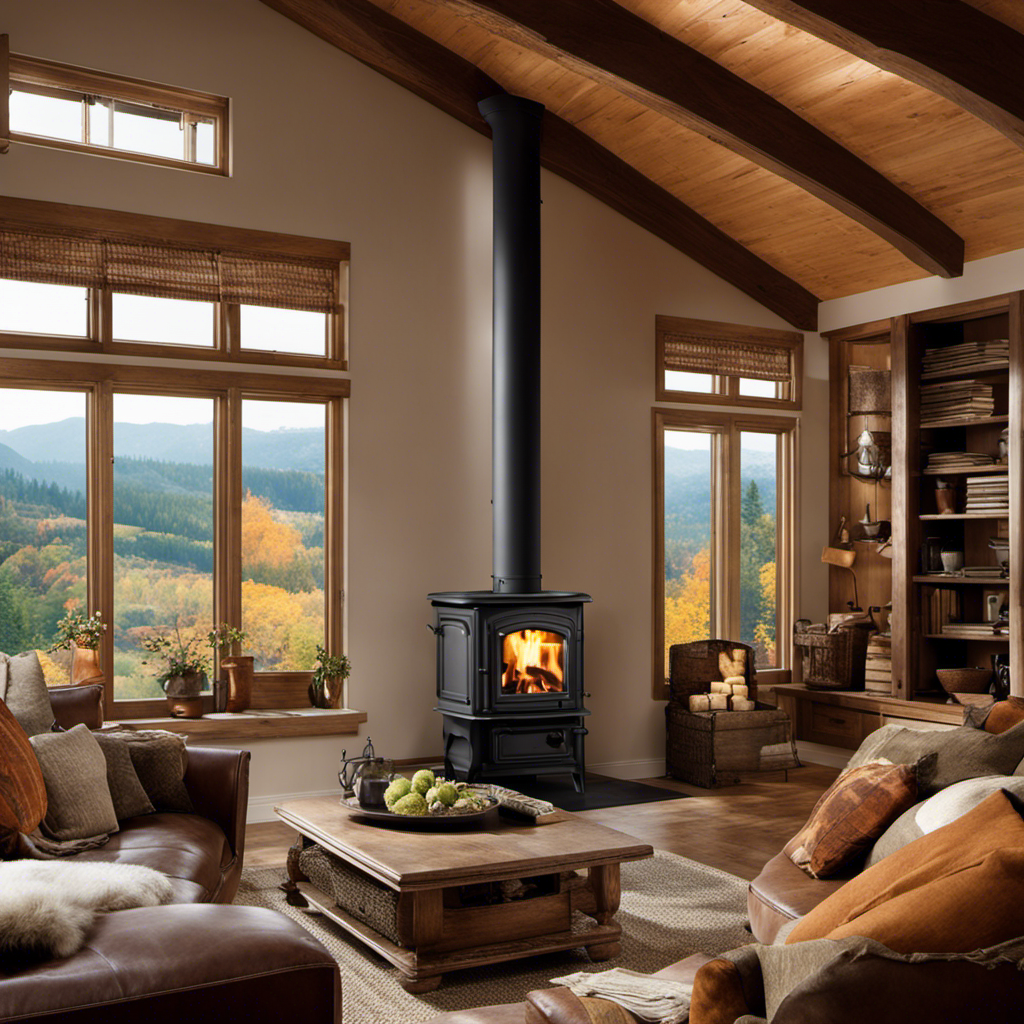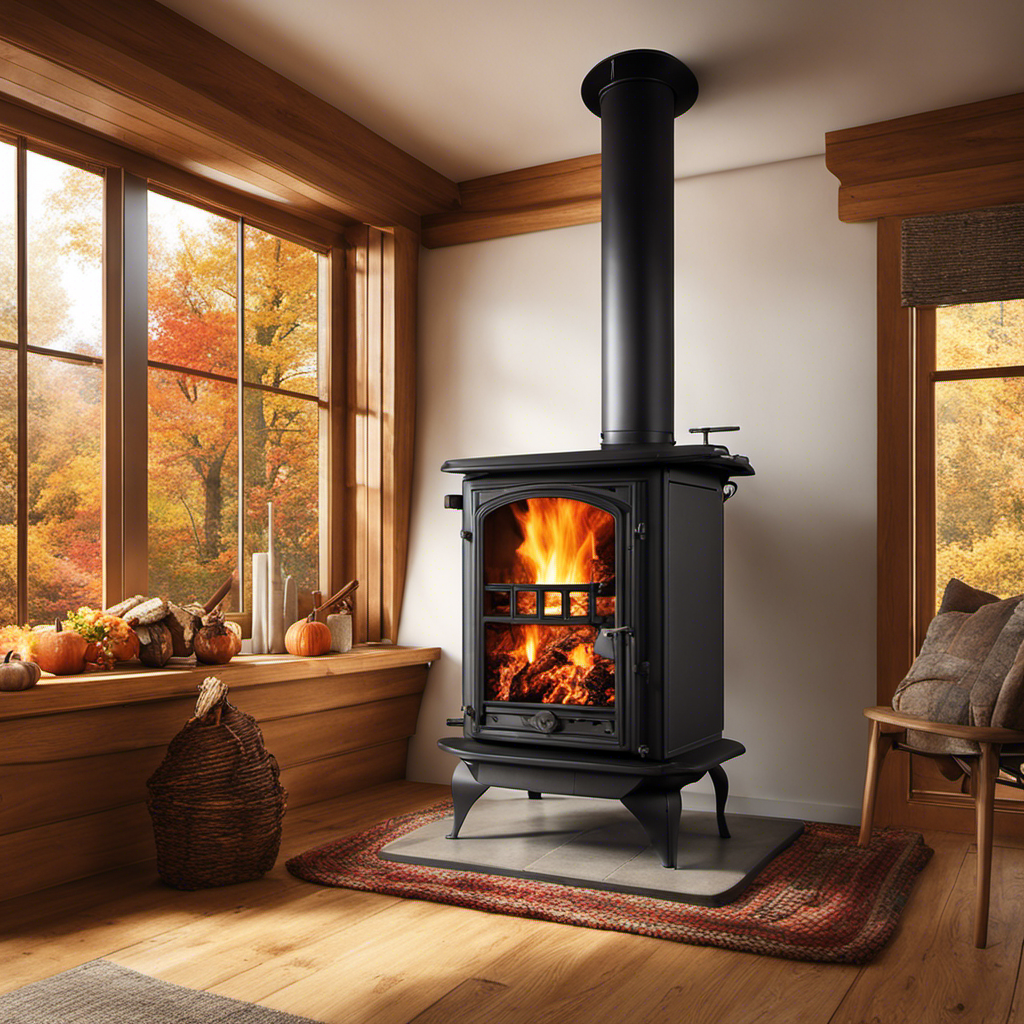I have always loved camping in my canvas tent, but when the temperatures began to drop, I started to long for a warm and cozy space. That’s when I stumbled upon the brilliant idea of installing a wood stove in my tent.
In this article, I’ll share with you the step-by-step process of choosing the right stove, preparing your tent, installing the chimney, and setting up the stove inside.
Get ready to transform your camping experience with this ultimate DIY project.
Key Takeaways
- Consider availability of fuel, convenience, and personal preference when choosing the right wood stove and fuel for a canvas tent.
- Properly measure and prepare the canvas tent for a proper fit and safe installation of the wood stove.
- Install the chimney and ventilation system with appropriate size and length, considering the height of the tent and distance from flammable materials.
- Position the wood stove in the center of the tent for maximum heat distribution and safety, using heat-resistant materials for improved insulation.
Choosing the Right Wood Stove for Your Canvas Tent
I’m trying to figure out which wood stove is the best fit for my canvas tent.
When it comes to wood stove fuel, there are a few options to consider.
The most common fuel for wood stoves is firewood, which is readily available and can provide a cozy, warm heat. However, firewood can be bulky to transport and may require some effort to gather and chop.
Another option is wood pellets, which are compressed sawdust and can be more convenient to store and handle. However, they may not provide the same ambiance as a traditional firewood stove.
As for the pros and cons of wood stove heating, one advantage is that wood stoves can provide a reliable source of heat, even in power outages. However, they require regular maintenance, such as cleaning out ash and ensuring proper ventilation to prevent carbon monoxide buildup.
Overall, choosing the right wood stove for your canvas tent depends on factors such as availability of fuel, convenience, and personal preference.
Preparing and Measuring the Tent for Wood Stove Installation
Usually, before installing a wood stove in my canvas tent, I carefully measure and prepare the tent to ensure a proper fit and safe installation. Canvas tents are known for their durability and ability to withstand various weather conditions.
When it comes to insulation options, there are a few choices available. One option is to use an insulated stove jack, which is a specially designed piece that fits around the stovepipe and prevents heat loss. Another option is to use insulation blankets or pads, which can be placed on the walls and roof of the tent to provide additional insulation. These options help to keep the heat inside the tent, making it more comfortable during colder months.
Now that the tent is prepared and insulated, it’s time to move on to installing the chimney and ventilation system.
Installing the Chimney and Ventilation System
I have carefully chosen the appropriate size and length of the chimney and ventilation system to ensure proper airflow and efficient operation.
When installing the chimney, it’s crucial to consider the height of the canvas tent and the distance it should be from any flammable materials.
I’ll also be installing a chimney cap to prevent rain or debris from entering the system.
To ensure optimal performance, I’ll insulate the chimney using a high-temperature insulation material to minimize heat loss and improve the overall efficiency of the wood stove.
By insulating the chimney, I can maximize the heat output inside the tent and reduce the risk of any external surfaces becoming too hot.
Now, let’s move on to setting up the wood stove inside the canvas tent.
Setting Up the Wood Stove Inside the Canvas Tent
Carefully and thoughtfully, we can position the wood stove in the center of the canvas tent, ensuring maximum heat distribution and safety.
When setting up a wood stove in a canvas tent, it’s important to consider insulation and alternative heating options.
To improve insulation, we can use heat-resistant materials such as fireproof blankets or reflective insulation panels around the stove. These materials will help retain heat and prevent it from escaping, ensuring a warm and comfortable environment inside the tent.
Additionally, it’s essential to have alternative heating options in case of emergencies or when the wood stove isn’t sufficient. This can include portable propane heaters or electric heaters powered by a generator.
Safety Tips and Maintenance for Wood Stove Usage in a Canvas Tent
To ensure the safety and longevity of our wood stove in the canvas tent, regular inspections and cleanings are necessary. Here are some tips for fire prevention and carbon monoxide detection:
-
Inspections:
-
Check the stovepipe for any signs of damage or blockage, such as creosote buildup or bird nests.
-
Examine the stove for any cracks or leaks that could lead to a fire hazard.
-
Cleanings:
-
Remove any ashes and debris from the stove and stovepipe regularly to prevent blockages and improve airflow.
-
Clean the stove’s glass window to maintain visibility and ensure proper combustion.
Fire Prevention:
- Keep flammable materials at a safe distance from the stove.
- Always use a fireproof mat or floor protector underneath the stove to prevent accidental fires.
Carbon Monoxide Detection:
- Install a carbon monoxide detector in the tent to alert you of any dangerous levels of this odorless gas.
- Test the detector regularly and replace batteries as needed.
Frequently Asked Questions
How Do You Properly Clean and Maintain a Wood Stove in a Canvas Tent?
To properly clean and maintain a wood stove, start by removing all ashes and debris. Use a wire brush to scrub the stove’s interior and remove any soot buildup. Regularly check and clean the stovepipe for any blockages to ensure proper ventilation.
Can a Wood Stove Be Used in a Canvas Tent During Heavy Rain or Snowfall?
Using a wood stove in a canvas tent during heavy rain or snowfall is both safe and effective. It can provide warmth and be used as a cooking source during inclement weather.
Are There Any Specific Fire Safety Precautions That Need to Be Taken When Using a Wood Stove in a Canvas Tent?
When using a wood stove in a canvas tent, it is crucial to take fire safety precautions. Regular maintenance and inspection of the stove, proper ventilation and clearances, and using a fireproof mat are essential to ensure safety.
What Are Some Alternative Heating Options for a Canvas Tent if a Wood Stove Is Not Suitable?
If a wood stove is not suitable for your canvas tent, there are alternative fuel options such as propane heaters or electric heaters. However, it’s important to still follow safety precautions to prevent any accidents.
Are There Any Specific Regulations or Permits Required for Installing a Wood Stove in a Canvas Tent?
Regulations and permits are necessary when installing a wood stove in a canvas tent. It’s crucial to comply with local guidelines to ensure safety. Proper ventilation, clearances, and fireproof materials are important considerations to meet the requirements.
Conclusion
In conclusion, when it comes to installing a wood stove in a canvas tent, there are several important considerations to keep in mind.
Firstly, it is crucial to choose the right stove for your tent. This includes considering the size and capacity of the stove, as well as any specific features or requirements you may have. Taking the time to research and select the appropriate stove will ensure that it fits well within your tent and provides the desired heating capabilities.
Secondly, accurate measurements of the tent are essential for a successful installation. This includes measuring the dimensions of both the floor space and the height of the tent. Proper measurements will help you determine the best location for the stove and ensure that it does not pose any safety risks.
Another crucial aspect of installing a wood stove in a canvas tent is setting up the chimney and ventilation system correctly. This involves carefully following the manufacturer’s instructions and ensuring that the chimney is properly secured and insulated. Adequate ventilation is important to prevent the buildup of carbon monoxide and other harmful gases.
Lastly, once the stove and chimney are installed, it is important to pay close attention to safety and maintenance. This includes regularly cleaning the stove and chimney to prevent the buildup of creosote and other debris. It is also important to practice safe usage habits, such as keeping flammable materials away from the stove and using a fireproof mat or barrier underneath.
By following these steps, you can enjoy the warmth and coziness of a wood stove in your canvas tent with confidence and peace of mind.
Growing up surrounded by the vast beauty of nature, Sierra was always drawn to the call of the wild. While others sought the comfort of the familiar, she ventured out, embracing the unpredictable and finding stories in the heartbeat of nature.
At the epicenter of every remarkable venture lies a dynamic team—a fusion of diverse talents, visions, and passions. The essence of Best Small Wood Stoves is crafted and refined by such a trio: Sierra, Logan, and Terra. Their collective expertise has transformed the platform into a leading authority on small wood stoves, radiating warmth and knowledge in equal measure.











